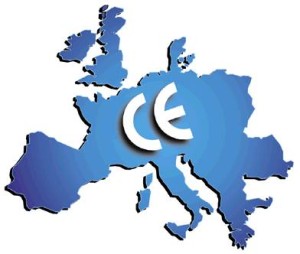General Information:
The CE mark is a mandatory self-certification mark required on many types of products to enter the Common (EU) European market. The CE certification mark signifies that the product meets applicable EU directive requirements. All EU countries require CE certification, and some countries that are not official EU members also require CE certification. For more information on CE marking see What is CE Mark.
What’s New:
Medical Device Directive (MDD) has moved to Medical Device Regulation (MDR) – The MDR become mandatory May 26th, 2021, and the MDD will no longer be applicable. Among the issues that brought on the move to the MDR was a lack of Notified Body oversight that resulted in avoidable casualties. As a result, the MDR adds rigorous requirements for Notified Bodies and expands accountability to virtually all economic operators (e.g. authorized representatives, importers, distributors, etc.). The increased requirements and accountability are key elements of the MDR, along with increased scrutiny of risk assessment documentation, technical files, and quality control. G&M can assist in tightening up these elements as well as managing the often-messy submittal process to certification bodies. For more information on the MDR and how it differs from the MDD, see our blog: New European Medical Device Regulation.

Current Challenges Navigating CE Certification
- A rocky road may lie ahead for CE certification programs in the hands of inexperienced project handlers.
- CE marking requirements have become increasingly numerous and complex. Products that used to require only:
- Safety (LVD) and
- EMC
Now require those plus:
- Wireless (RED),
- Hazardous Substances (ROHS),
- Energy (ErP),
- Recycling (WEEE), and the list goes on
Which of these apply to your products and how can you demonstrate compliance with them?
- Risk Management (RM) and Hazard Analysis (HA) have become de facto requirements for demonstrating compliance to CE marking directives. The creation of RA and HA documents can be time consuming to develop, particularly for companies without experience in these concepts.
How Can We Help?
As a consulting laboratory, G&M’s team is required to have a solid grasp of regulatory requirements along with the ability to align certification programs to our customer’s needs. Whether it’s testing one sample to represent a family, identifying requirements that are not applicable under specific conditions, or providing preliminary evaluations, we have the background to properly manage your CE Certification Project. A Certification Body route on the other hand, can be derived from a platform of bureaucracy, resulting in delays and frustration from overly restrictive practices.
Many our team members take on the role of in-house compliance management for our customers. This role demands that we have visibility of all CE requirements and that we have an established expert in each major discipline. We can help determine which of the directives and standards apply to your product, and the most effective path to compliance.
Demonstrating compliance to the Medical or Machinery Directives have long relied on risk management to ascertain risks posed by these types of products. G&M’s team has been there assisting customers in these areas from the start. Our team is experienced in the different methods of hazard analysis and how to best apply them.
*The documentation and testing process for a CE Certification Evaluation can be long and tedious, particularly if the basic concepts of the directives or even the standards are not fully understood. Trust G&M to get you through the CE process fast and efficiently*
For more information, additional questions, or to request a quote – Please submit an online RFQ, Contact Us, or call.
If this is your first time attempting CE certification, the first time certifying a particular type of equipment, or the first time certifying equipment to new standards, we highly recommend a Preliminary Inspection. Preliminary Inspections are a quick and inexpensive way to detect the following before submitting for a Certification Evaluation:
- Design Deficiencies
- Component Deficiencies
- Product Documentation Deficiencies
- Testing Deficiencies
Since the latest Machinery Directive (2006/42/EC) came into effect in 2010, the definition of equipment that falls within the scope of this directive became more defined in some cases, but more ambiguous in others. One equipment category affected by the additional ambiguity is Laboratory, and Control/Measurement equipment. Much of this type of equipment that was once considered to be addressed by the Low Voltage Directive, now technically falls under the scope of the Machinery Directive. G&M has extensive experience in tailoring Machinery Directive programs for Laboratory, and Control/Measurement equipment



